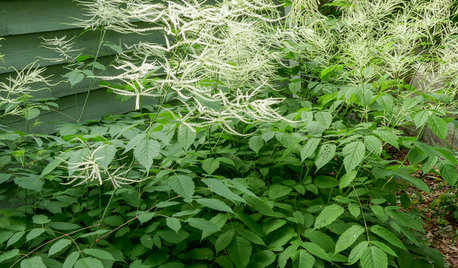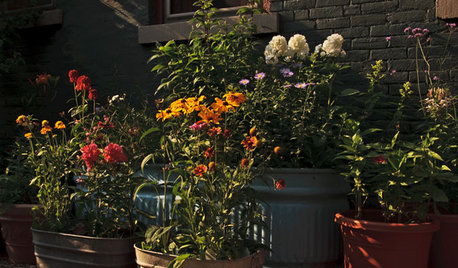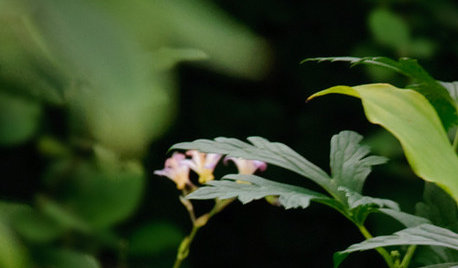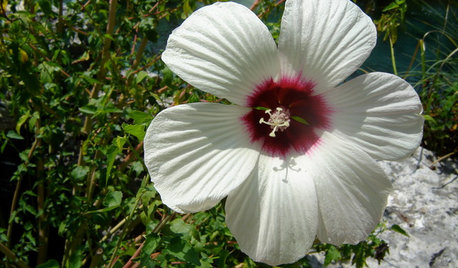Japanese Beetle Traps Work Great!
mulberryknob
15 years ago
Related Stories

GARDENING GUIDESOrganic Matters: Thwart Insect Pests With Trap Crops
Add a few sacrificial plants to your garden to lure insects away from the harvest
Full Story
FLOWERS AND PLANTSAruncus Dioicus Is a Stately Plant for Shady, Moist Garden Spots
Plant goat’s beard in perennial and woodland gardens. Its large white spring blooms attract bees, beetles and butterflies
Full Story
GARDENING GUIDESGreat Lakes Gardener: What to Do In July
Gather juicy berries and breathe in the lovely scent of lilies, but don't forget to stay on top of watering needs and shake off the beetles
Full Story
GARDENING GUIDESGreat Design Plant: Pinus Thunbergii ‘Thunderhead’
Thunderhead pine adds year-round strength and structure to the garden
Full Story
GARDENING GUIDESGreat Design Plant: Stachys Officinalis ‘Hummelo’
The adaptable ‘Hummelo’ betony adds jolts of color to a sunny border or woodland edge
Full Story
GARDENING GUIDESGreat Lakes Gardener's September Checklist
Watching wildlife, gathering leaves and watching a rainbow of roses and asters are high priorities in Great Lakes gardens this month
Full Story0

REGIONAL GARDEN GUIDESGreat Lakes Gardener's June Checklist
Hear the berries beckoning? Pluck them while enjoying the wealth of garden blossoms and maybe kicking out a few bugs this month
Full Story0

LANDSCAPE DESIGN7 Great Trees for Summer Shade and Fall Color
These landscape-pro faves straddle the seasons beautifully. Could one enhance your own yard?
Full Story
GARDENING GUIDESGreat Design Plant: Hibiscus Moscheutos
Crimsoneyed rosemallow is an ideal flowering perennial for wet sites and is ready to propagate now
Full Story
GARDENING GUIDESGreat Design Plant: Cannas
Easy to grow and maintain, these showy, colorful plants are perfect for beginning gardeners
Full StorySponsored



ilene_in_neok
Okiedawn OK Zone 7
Related Discussions
How to properly use Japanese Beetle traps?
Q
Japanese Beetle Trap - Works!
Q
Japanese Beetle Trap
Q
Japanese Beetle traps & Milky Spore?
Q
mulberryknobOriginal Author
Annie
mulberryknobOriginal Author
Okiedawn OK Zone 7
Annie
Maryl (Okla. Zone 7a)
Okiedawn OK Zone 7
mulberryknobOriginal Author
Maryl (Okla. Zone 7a)
Okiedawn OK Zone 7
Maryl (Okla. Zone 7a)
mulberryknobOriginal Author
Okiedawn OK Zone 7
Maryl (Okla. Zone 7a)
ellens_joy
skeetermagnet
ellens_joy
ellens_joy
jessaka
bizydiggin
jessaka
Okiedawn OK Zone 7
jessaka
bizydiggin
jessaka
Okiedawn OK Zone 7
MariposaTraicionera
Okiedawn OK Zone 7
jessaka
bizydiggin
Okiedawn OK Zone 7
bizydiggin
jessaka
Okiedawn OK Zone 7
pfarmerphil
soonergrandmom
shekanahh